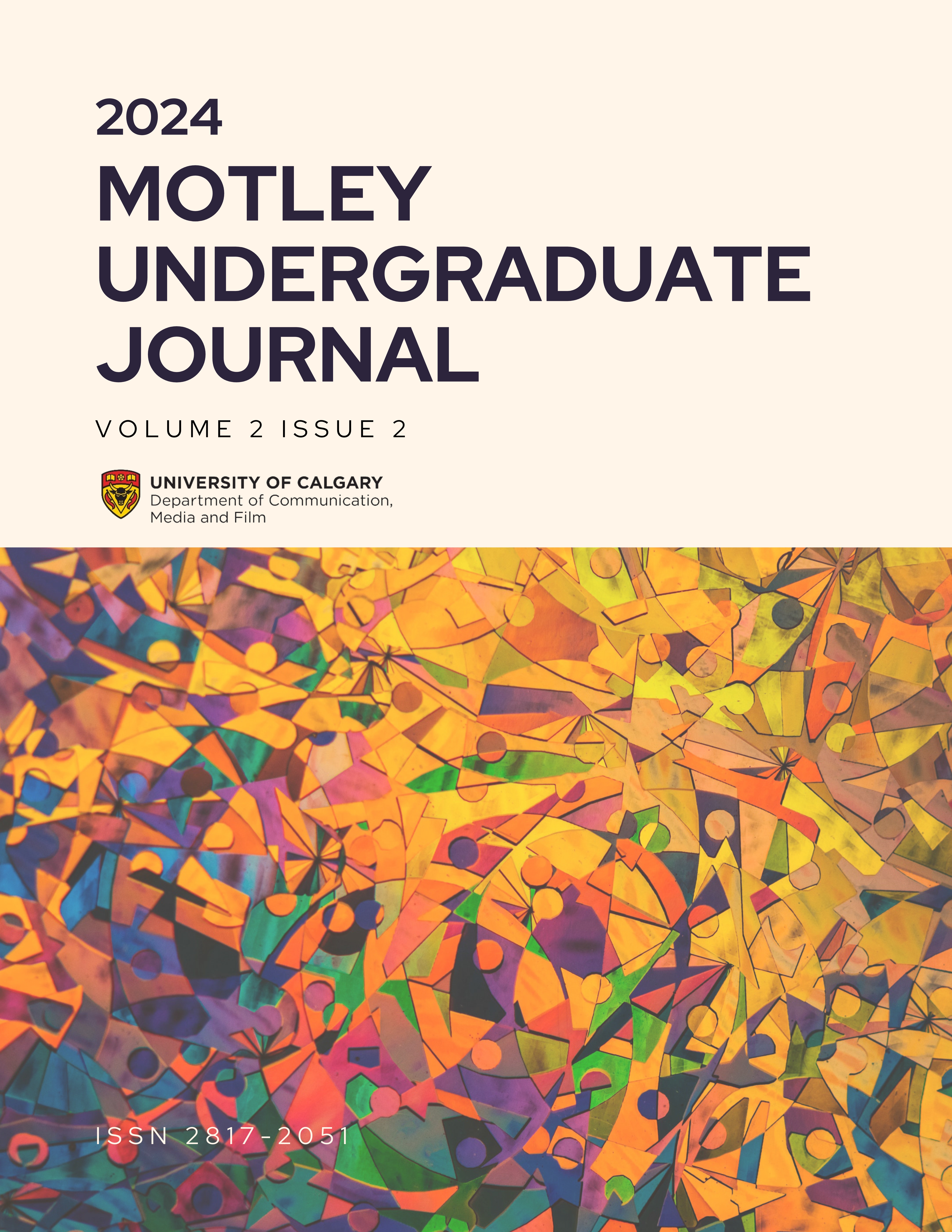Indigenized Leisure and Data Colonialist Systems
Addressing Invisible Presence Through the Visibility of Indigenous Identities Online
DOI:
https://doi.org/10.55016/ojs/muj.v2i2.79786Keywords:
Anishinaabe, New Media, Social Media, Leisure, Data Colonialism, Third-Party, Visibility, Invisibility, User Experience, Identity, Data AppropriationAbstract
Social media sites and the opportunities they advertise are often promoted as facilitating community connection, creativity, and listening with others. Many facets and descriptors of social media opportunities can be related to First Nations’ understanding of what comprises wellness and leisure. With this in mind, many Indigenous users may partake in social media with the expectation of a primarily leisurely online experience that would contribute to an individual’s health and wellness. Couldry and Mejias’ (2019) concept of ‘data colonialism’ frames the purpose of online spaces such as the social media platforms TikTok, Instagram, and X (Twitter) as having a very different goal, one removed from leisure or where leisure is nothing more than a symptom of data collection efforts. This digital auto-ethnographic project, assisted by discourse analysis, utilizes the researcher’s Anishinaabe identity markers through site profiles to gather data which explores whether or not social media sites are truly a space of leisure for First Nation’s users under ‘data colonialism.’ This project finds a clash in data collection functions and online community opportunities, which renders Indigenized leisure within the digital space a fallacy. In council with teachings from Velkova and Kaun’s (2021) article Algorithmic Resistance: Media Practices and the Politics of Repair and Wemigwans’ (2018) A Digital Bundle; Protecting and Promoting Indigenous Knowledge Online, this project looks to the future, discussing the manipulation of social media affordances towards a true online wellness space for Indigenous users.
Downloads
References
Bucher, T. (2012). Want to be on the top? Algorithmic power and the threat of invisibility on Facebook. New media & society, 14(7), 1164-1180.
Couldry, N., & Mejias, U. A. (2019). Data colonialism: Rethinking big data’s relation to the contemporary subject. Television & New Media, 20(4), 336-349.
Gonzalez, M. B., Steinberg, R. I., Bruce, F., Ullrich, J. S., & Walls, M. L. (2023). Indigenous Elders' Conceptualization of Well-being: An Anishinaabe Worldview Perspective. International Journal of Indigenous Health, 18(1), 1-16. https://doi.org/10.32799/ijih.v18i1.39518
Instagram. (2024, April 4). About Instagram. about.Instagram. https://about.instagram.com/
Small, S. (2007). Aboriginal recreation, leisure and the City of Calgary. Primatisiwin: A Journal of Aboriginal and Indigenous Community Health, 5, 111, 126.
TikTok. (2024, April 4). About TikTok. TikTok.com. https://www.tiktok.com/about?lang=en
Velkova, J., & Kaun, A. (2021). Algorithmic resistance: Media practices and the politics of repair. Information, Communication & Society, 24(4), 523-540.
Wemigwans, J. (2018). A Digital Bundle: Protecting and Promoting Indigenous Knowledge Online. Regina: University of Regina Press. https://doi-org.ezproxy.lib.ucalgary.ca/10.1515/9780889775527
X (Twitter). (2024, April 4). About X. about.X. https://about.twitter.com/en
Downloads
Published
How to Cite
Issue
Section
License
Copyright (c) 2024 Taylor Van Eyk

This work is licensed under a Creative Commons Attribution-ShareAlike 4.0 International License.
Copyright Policy
The Motley Undergraduate Journal is an Open Access article distributed under the terms of the Creative Commons Attribution 4.0 Share-Alike License. Under this license, users are free to share (copy, distribute and transmit) and remix (adapt) the contribution, including for commercial purposes, providing that the original work is properly cited. Under Creative Commons, authors retain copyright in their articles.
Author Self Archiving Policy
Authors are permitted to post their work online in institutional/disciplinary repositories or on their own websites. Pre-print versions posted online should include a citation and link to the final published version in The Motley Undergraduate Journal as soon as the issue is available; post-print versions (including the final publisher's PDF) should include a citation and link to the journal's website.

